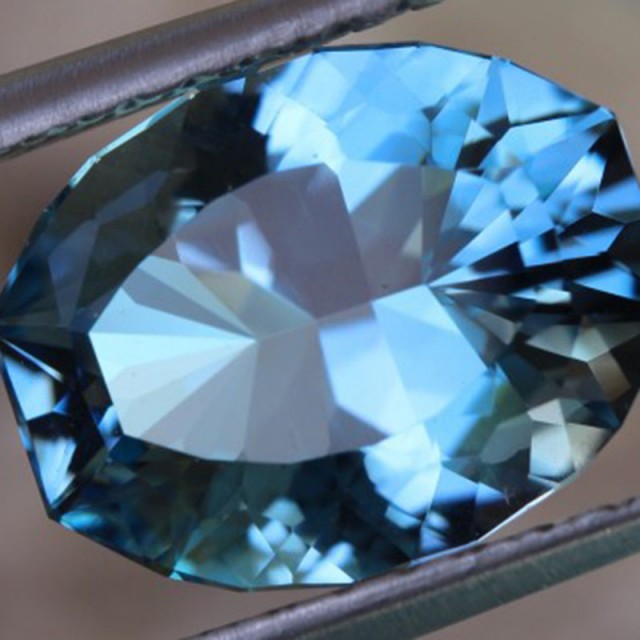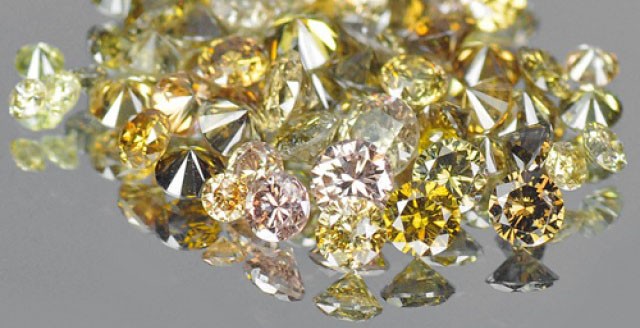
公開日5th Mar 2019
変更日時4th Jun 2025
放射線照射された宝石は危険ですか?
 現在市場に出回っている宝石の治療法の中で、常に疑問を投げかける治療法が一つあります。それは放射線照射です。
現在市場に出回っている宝石の治療法の中で、常に疑問を投げかける治療法が一つあります。それは放射線照射です。
「照射」という言葉を聞くと、まず頭に浮かぶのは「安全?」ということでしょうか? 朗報です。はい、安全です。宝石が照射される理由と、NRC(原子力規制委員会)があなたの安全を確保するために行っていることについて詳しく見ていきましょう。
最も多くの議論を呼んだ宝石はブルートパーズです。1980年代以降、この宝石は私たちがよく知るあの青色にするために、定期的に放射線照射を受けてきました。ブルートパーズの放射線照射には2つの方法があり、どちらも原子炉のような装置を用いています。
一つ目の方法は、電子流を利用して色を誘発する方法です。二つ目の方法は、中性子流を利用する方法です。
電子線処理法では人体に害を及ぼさないトパーズが生産されますが、中性子線処理法で処理されたトパーズは、何年も放射線を放出し続ける可能性があります。原子力規制委員会(NRC)を含む様々な機関による広範な研究の結果、市場に流通するすべての中性子照射ブルートパーズが安全に取り扱えることを保証するために、厳格な検査が実施されています。
一般的に放射線照射される宝石は何ですか?
以下のリストは、放射線照射によって実現可能な宝石の色の例です。これは完全なリストではなく、他にも様々な色のバリエーションがあります。


照射プロセス
宝石に放射線を照射する方法は主に3つあります。それぞれの方法では使用する設備が異なり、宝石への影響も異なります。
中性子衝撃– 原子炉の使用
電子(ベータ)衝撃- 加速器の使用
ガンマ線照射- コバルト60施設の使用(これらの施設は医療機器の滅菌によく使用されます)
照射プロセスはボールに例えることができます。中性子照射法では、大きなテニスボールを被写体に照射して発色させます。電子照射法では、小さなボールを被写体に照射します。ガンマ線照射法では、膨大なエネルギーを持つ微小なボールを用いて発色させます。

放射線照射により宝石は放射能を帯びるのでしょうか?
宝石が放射線にさらされる時間が長ければ長いほど、放射能を帯びる可能性が高くなります。宝石が放射能を帯びる理由は、宝石内の不純物が活性化するためです。電子線または中性子線で処理された宝石は、一定期間放射能を帯びたままになります。ガンマ線で処理された宝石は放射能を帯びません。
電子線照射処理された石については、原子炉から取り出された物質の放射線レベルは、一般的にNRC(原子力規制委員会)によって安全に取り扱えるものとされています。それでもなお、トパーズを数ヶ月間保管するための厳格なガイドラインが設けられています。放射線は時間の経過とともに減衰するため、原子炉から取り出した直後に安全に扱える石であれば、市場に出た後も安全に扱えるということを忘れないでください。
中性子放射線は安全になるまでに長い期間を要します。NRCによると、中性子照射を受けたばかりのTopasが安全になるまでの平均期間は12~24ヶ月です。
どれくらいの放射線にさらされるのでしょうか?
放射線はどこにでもあります。それは生命活動の自然な一部であり、実際には放射線なしでは生きていけません。簡単に比較してみましょう。放射線はミリレム、つまり放射線吸収線量で測定されます。
6カラットのトパーズを1年間着用した場合(放射線レベルがNRCが安全とみなす最大値であると仮定)= 0.03ミリレム
さて、これを 1 年間の露出に基づいた他の一般的なものと比較してみましょう。
磁器の冠または義歯 = 0.07ミリレム(トパーズの2.3倍)
胸部X線検査 = 10ミリレム(トパーズの333倍)
食べ物と水(はい、これらにも自然放射線があります)= 30ミリレム(トパーズの1,000倍)
大西洋横断飛行 = 2.5ミリレム(トパーズの83倍)
テレビを見る= 1ミリレム(トパーズの33倍)
放射線照射によって色はどうやって出るのでしょうか?
これは非常に複雑なテーマなので、いくつか例を挙げて解説しましょう。宝石の色は、発色団(不純物)と色中心(欠陥)という2つの要素によって決まります。
発色団
発色団は鉱物中の色の原因となる不純物です。
サファイアを例に挙げましょう。純粋なサファイアは透明です。不純物としてチタンを加えると青色に変わります。鉄を加えると黄色に変わります。クロムを加えるとピンク色に変わります。鉄とクロムを加えると、オレンジ色/ピンク色(パパラチャ)になります。
これは宝石の色を出す最も一般的な方法です。サファイアの色をより鮮やかにしたい場合は、チタンを表面拡散させることで、より青い石を作り出すことができます。

カラーセンター(欠陥)
さて、ダイヤモンドを見てみましょう。すべてのダイヤモンドは純粋な炭素でできています。では、なぜピンクダイヤモンド、イエローダイヤモンド、レッドダイヤモンドが存在するのでしょうか?答えは、カラーセンターです。これは宝石の結晶構造における欠陥であり、この欠陥が色の原因となります。

クンツァイト、トパーズ、ヒデナイト、またはダイヤモンドを採取し、結晶格子に欠陥を生じさせようとすると、色が誘発されます。
どうやって欠陥を生じさせるのでしょうか?結晶内の原子を粉砕します。ここで電子線と中性子線が役立ちます。文字通り、宝石を放射線で粉砕することで、色を誘発する欠陥を生じさせます。
色は永久に残りますか?
これらの欠陥は、宝石にエネルギーを与えることで修復できます。クンツァイトの場合、このエネルギーは太陽からの紫外線という形で現れます。太陽のエネルギーは結晶構造を修復し、宝石のピンク色を除去します。
市場には放射線照射を受けたヒデナイトが豊富に流通しています。ヒデナイトは色素中心が誘起され、緑色に発色します。この色はクンツァイトと同様に太陽光に敏感です。
しかし、例えばトパーズやトルマリンの色は安定しています。トパーズの青色を作り出すには、宝石に放射線を照射し、その後加熱する必要があります。この加熱処理によって色が安定し、時間の経過とともに色褪せたり劣化したりしない宝石が生まれます。
茶色のトパーズの中には、電子照射によって生じたものがあります。このトパーズは加熱すると青色に変化し、色が安定します。しかし、数年前、ある人がトパーズに放射線を照射することを思いつきました。ところが、トパーズがオレンジがかった茶色に変色したため、加熱して青色に変えるのではなく、インペリアル・トパーズとして販売することにしました。Gem Rock Auctionsなどのサイトでは、この種の石をインペリアル・トパーズとして販売することは許可されていません。
放射線照射された宝石がどれほど安全かご理解いただけたところで、本当に入れ歯をつけたいかどうかを決める時が来ました。結局のところ、入れ歯1セットとトパーズの宝石2個、どちらを選びますか?
宝石を買う
Gemstone Encyclopedia検索
最新記事
ゲイラス石は、乾燥しやすいため白濁しやすい希少鉱物で、主に工業用途で使用されています。この完全ガイドで、ゲイラス石の歴史、特性、用途、そして特徴をご覧ください。
7th Dec 2025
チオライトは、氷晶石に似た、無色から白色の希少鉱物です。宝石としては非常に希少で、限られた産地からしか産出されません。チオライトの用途、歴史、価格、特徴についてはこちらをご覧ください。
5th Dec 2025
ブライトハウプタイトは、ニッケル鉱に関連する銅赤色から紫色のアンチモン鉱物で、金属光沢と銀鉱石との関連性で知られています。ブライトハウプタイトの歴史、特徴、価値、そして用途について学びましょう!
21st Nov 2025
記事のカテゴリ
How To's is where you will find helpful articles from gem Rock Auctions on how to cut gemstones, select gemstones and buy gemstones.
9記事数




